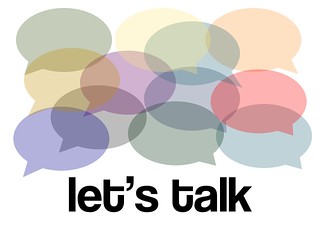Dialogue is the engine behind Knowledge Management - it is the primary means by which Knowledge is shared and absorbed.
We often assume that connecting people together will lead to better knowledge exchange, but connecting wires doesn't necessarily make a circuit. You need a way of ensuring conductivity as well as connectivity, and dialogue provides that conductivity for knowledge.Dialogue is different from other forms of conversation. In a Dialogue, the participants are trying to reach mutual understanding. It is a process of exchange of views and of knowledge, of both sides asking questions and of listening to the answers. It is a combination of listening, advocacy, reasoning and consensus-seeking. It is hard to imagine effective knowledge exchange without some form of dialogue.
- Dialogue differs from argument, which is all about presentation and advocacy of views. There are no winners or losers in dialogue; you can't say "I lost the dialogue with Peter”.
- Dialogue differs from debate, which is all about testing the validity of a proposition rather than testing whether it is understood.
- Dialogue differs from interrogation, where all the questions are one-way, and only one person stands to profit from the exchange.
- Dialogue differs from discussion, which is often about analysis of detail rather than searching for common understanding.
- Dialogue differs from reporting, which is the presentation of facts rather than the search for common understanding.
Dialogue is needed, in order to
- Help the knowledge supplier understand and express what they know (moving from superficial knowledge to deep knowledge)
- Help the knowledge customer understand what they need to learn
- Transfer the knowledge from supplier to customer
- Check for understanding, and
- Collectively make sense of the knowledge
Almost all of the effective Knowledge Management processes are based on dialogue.
AARs, Peer Assists, Knowledge Handovers, retrospects, Harvesting interviews, Learning Histories, Knowledge exchange - all are dialogue based. All of these processes are facilitated, and part of the role of the facilitator is to ensure dialogue rather than argument or monologue.
Some of the elements of dialogue can be done remotely through Web 2.0 tools, though this needs to be done deliberately. We can't assume that dialogue "just happens" over social media, any more than we can assume that a conversation will be a dialogue.
So how do we promote dialogue as part of our knowledge management programs?
- Blogs are 95% monologue, and although some dialogue can be sparked through blog comments, it's more often debate than dialogue. However examples such as the Polymath project suggest that a structured approach of Blogs and Wikis can lead to problem-solving through dialogue
- Community discussion forums can occasionally engender dialogue, but again, debate and argument are often found in there as well.
- Social media promote conversation, but not necessarily dialogue. The conversations in LinkedIn, for example, are mostly serial monologues, where people post their own views while seldom seeing to understand the views of others
- Wikis allow co-creation, but not through a dialogue format, which makes them difficult for really contentious or emergent topics.
- We deliberately promote, even to the extent of educating people in, the behaviours of listening and questioning, as part of a Knowledge Management and Organisational Learning Culture.
- We introduce the facilitated processes mentioned above
- We ensure our Online communities of practice are also guided and facilitated, to promote dialogue instead of argument
- We train the facilitators well.





















